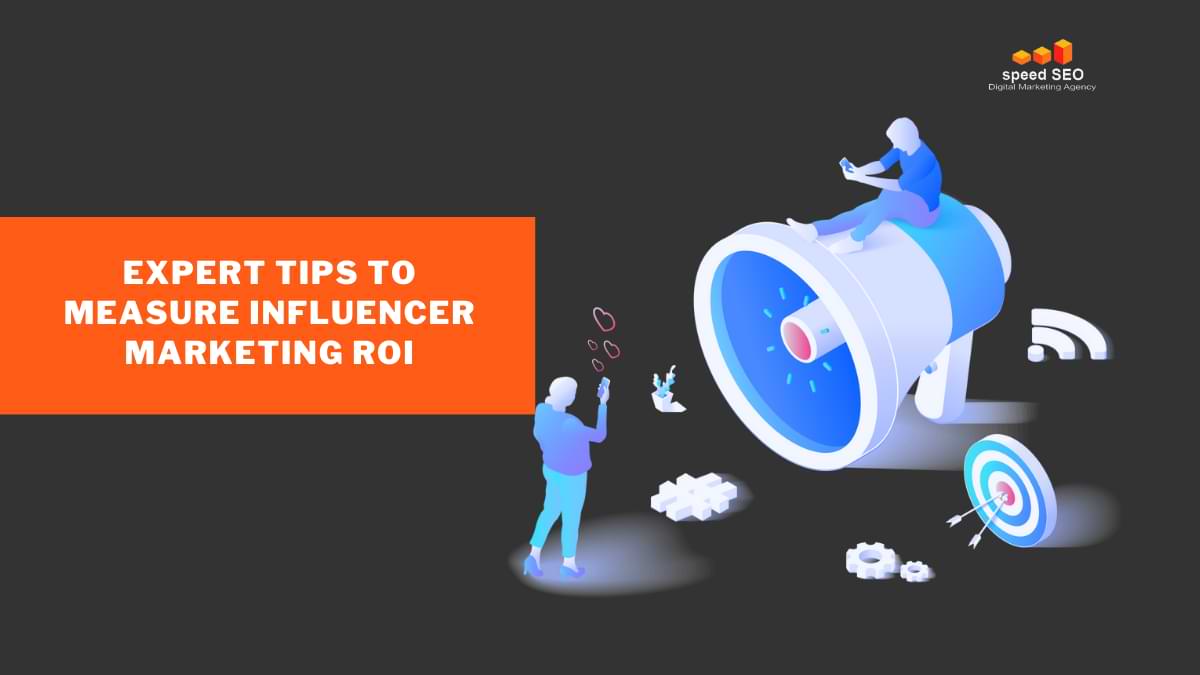Influencer marketing delivers impressive results. But quantifying that value can be challenging.
How can brands accurately measure campaign return on investment when so much happens behind the scenes on social platforms?
In this comprehensive guide, we’ll cover tips and best practices marketers use to track the ROI of their influencer initiatives and continually optimize efforts.
The Importance of Influencer Marketing ROI

Thoroughly tracking ROI is critical for several reasons:
Value content that works: Accurate performance data allows you to double down on what’s working and stop activities showing low ROI.
Refine partnerships: Identify your most valuable influencers contributing the most impact.
Justify budgets: Hard numbers make it easier to secure ongoing influencer marketing budget.
Improve over time: Metrics analysis informs strategy changes and future campaign optimization.
Reduce fraud: Monitoring helps detect bot accounts and fake engagement.
Without proper measurement frameworks, you miss key opportunities to maximize the return from your influencer investments.
Challenges in Measuring Influencer Marketing ROI
While vital, measuring influencer ROI presents some inherent challenges:
Indirect impact: Influencers raise awareness and sentiment, but don’t always drive direct site actions. The value is complex.
Cross-channel effects: Influencer content impacts multiple channels like social and SEO. Connecting dots is difficult.
Private user data: Platforms like Instagram don’t provide follower actions beyond basic engagement.
Long purchase cycles: Conversions from awareness happen over months and years, not overnight. Requires long-term analysis.
Ad and media value equivalency: Translating exposure value to media spend can feel hypothetical.
The good news? Brands can overcome these hurdles to effectively quantify ROI using the right frameworks.
A Holistic Framework to Track Influencer Marketing ROI
Rather than focusing on direct sales alone, brands should analyze influencer efforts against both quantitative and qualitative KPIs including:
Brand Awareness Metrics
- Impressions
- Reach
- Views
- Mentions
Engagement Metrics
- Likes
- Shares
- Comments
- Click-through rate
Conversion Metrics
- Site traffic
- Lead generation
- Purchases/sales
- Downloads
Brand Sentiment Metrics
- Surveys
- Reviews
- Mentions
This mix of performance indicators helps you capture both the direct response value and longer-term brand lift generated by influencers across channels.
Let’s explore tips to track each area:
Monitoring Brand Awareness Metrics
Exposure metrics allow you to quantify the audience scale influencers provide:
- Impressions: The number of times content is seen.
- Reach: The number of unique accounts exposed.
- Views: Video views, story views, etc based on content format.
These metrics showcase the influencer’s potential impact on awareness. Compare reach to your follower counts.
Mentions also help capture awareness and sentiment lift. Track brand name mentions during and after campaigns.
Measuring Engagement Levels
Engagement indicates content resonance and audience interest. Assess:
- Likes: Post likes, video views, etc
- Shares: Tracks viral reach as users share content
- Comments: Valuable for sentiment analysis
- Click-throughs: Follows to site, link clicks, promo code usage
Higher than average engagement rates signal influencer content is hitting the mark. Benchmark against industry averages.
Analyzing Conversions Driven
Conversion metrics allow you to directly correlate influencer impact on bottom line results:
- Site traffic: Landing page visits driven by links
- Leads: Email sign-ups, downloads, inquiries
- Purchases: Online and offline sales
- Downloads: App installs, content downloads
These are the action metrics most tied to revenue. Isolate influencer-driven actions using UTM tracking, affiliate links, and promo codes.
Tracking Brand Sentiment Over Time
Softer metrics related to brand perception include:
- Surveys: Measure change in brand sentiment before and after working with an influencer.
- Reviews: Collect testimonials and reviews from influencers to repurpose.
- Mentions: Favorable brand mentions also showcase positive sentiment.
These qualitative indicators help capture the longer-term edge influencers provide.
Tips to Accurately Track Influencer Marketing ROI
To compile the above performance metrics, here are proven tracking tips:
⚡Use tracking links and UTM codes tied to each influencer to monitor traffic and conversions. This isolates their unique impact.
⚡Create unique promo codes for influencers to track sales they directly drive.
⚡Leverage affiliate marketing links so influencers earn commission on purchases from their audiences.
⚡Use 3rd party analytics platforms like HYPR, Julius, or CreatorIQ to provide detailed campaign insights.
⚡Set up Google Alerts for brand name mentions to capture increases in online conversations.
⚡Conduct surveys before and after campaigns to identify lift in brand awareness, favorability, and associations.
⚡Monitor reviews to see if influencer content contributes to more customer testimonials.
⚡Establish benchmark metrics before campaigns launch so you can compare performance.
⚡Document influencer content strengths so you can repeat what works.
⚡Share reports regularly with influencers so they can optimize too.
⚡Calculate equivalent ad value based on impressions and engagement for context.
With the right tracking plan in place, you gain visibility into precisely how influencers are impacting your brand and bottom line. These insights allow continual optimization to maximize ROI over time.
Key Takeaways for Measuring Influencer Marketing Success
Here are the core elements to effectively quantify influencer marketing value:
- Track both quantitative and qualitative metrics – engagement, conversions, sentiment, impressions. Look beyond direct sales alone.
- Isolate influencer impact through specific UTMs, promo codes, and affiliate links for each.
- Leverage third party analytics platforms for detailed campaign insights most platforms don’t provide.
- Survey target audiences before and after to quantify brand lift.
- Set benchmarks before launching campaigns to compare results.
- Document strategy learnings so successful initiatives can be repeated and improved.
Influencer marketing delivers significant ROI. But you need the right tracking frameworks in place to showcase that value and continually improve. For assistance creating customized measurement plans tailored to your influencer campaigns, our team of experts is here to help. Let’s talk!





